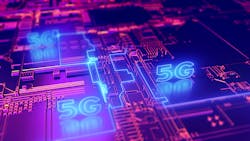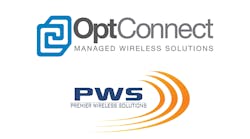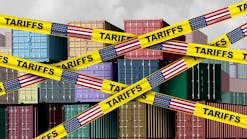From 3G to 4G to 5G and beyond: how cellular connectivity is powering self-checkout and vending
It’s important to have the right connectivity to support your digital transformation. Relying on Wi-Fi or an on-premises network that you don’t own and manage yourself can limit your ability to control what is happening and how quickly you can respond if the connection goes down. Many operators find themselves needing a quick, reliable and secure way to connect, and many are turning to cellular as their best option.
As the cellular carriers roll out the new and enhanced 5G network, they will be turning off older 2G and 3G networks that will cause many operators to lose connectivity. This article takes a full look at the changing landscape of cellular connectivity and what operators need to do to keep their equipment connected while also highlighting what will be possible in the future with enhancements of the 5G network.
5G and its benefits
The term 5G stands for “fifth generation.” The wireless industry adopted the standards for 5G in 2017. Since that time, the major cell carriers and cellphone manufacturers have been developing the infrastructure and the products that can support 5G.
However, the appeal of 5G is much more than just the improvements in speed we will see with our cellphones. This is because 5G offers significantly more bandwidth for more devices and will allow for upload and download speeds that are much faster, all with less latency and more reliable than the current 4G LTE. All carriers are advertising their 5G networks, however, not all 5G technology is the same.
5G is a great opportunity for developers to deploy applications that take advantage of fast, high-speed lower latency networks. Like any data network, people want to know what the advantages are going to be of this new technology. So, let’s look at what specifically will be possible with 5G.
Killer speeds
If you are close enough to one of these 5G towers with your 5G phone, you will be able to download entire episodes of HD programs in a matter of seconds. Buffering when viewing a video will be a thing of the past.
Less tower congestion
With current 4G LTE technology, when thousands of people descend on a small area, towers tend to get congested and reach capacity. On 5G, this will no longer be an issue. This means that people won't feel like they are competing against each other for the tower using their cellphone on Internet-based activities like streaming content with all the other users at crowded venues like airports, sporting events and concerts.
With more bandwidth available, people will also be able to use this bandwidth to do more with their devices, making them more versatile than ever before.
New technology options
As network speeds have increased, more and more tasks are being transitioned from the world of computers to the world of smart devices. With the increasing network speeds, this could open new doors for smart device technology that may not have been available. We’re talking AI (artificial intelligence), VR (virtual reality), and much more.
When 4G LTE first emerged, people were blown away by the speed and capabilities of such an advanced network. With 4G, LTE came with more rich content, from video streaming to live gaming. The introduction of 5G will allow for enhanced innovation and new capabilities that weren’t previously possible.
Shutting down the 2G/3G networks
With 4G’s increasing growth and 5G already being rolled out in larger metropolitan areas, network operators’ focus has been shifting away from legacy technologies like 3G. The move away from 3G will undoubtedly be a significant transition for many IoT and M2M companies, because 2G and 3G connectivity is still widely used for deployed devices.
T-Mobile is retiring the Sprint 3G network on March 31, 2022. Between now and that date when the Sprint network is fully decommissioned, capacity and coverage may change. As the cellular carriers roll out the new and enhanced 5G network, they will be turning off older 2G and 3G networks that will cause many operators to lose connectivity prior to the official sunset date.
This means that the time for planning and figuring out how to upgrade your older 2G/3G devices is now. It is important to have a plan in place, especially for organizations that have a large portfolio of devices that need to be upgraded.
Keeping your equipment connected
As adoption grows and the carriers invest more and more resources into new technology, IoT will continue to expand and be an even larger part of all our lives. Understanding the need and having a strategic plan in place to upgrade older devices is important to you and your business so that you don’t face service interruptions or downtime.
An integral part of this plan will be upgrading your 2G/3G equipment to 4G/5G so that it continues to have connectivity once the cellular carriers sunset their older network. The carriers have acknowledged that service may be reduced in areas as they upgrade towers from 2G/3G to 5G.
As the carriers continue to transition older equipment to 5G, coverage will be reduced and older devices may not work, even before the deadlines. It’s best to get started now so that your equipment doesn’t lose connectivity and functionality.
ABOUT THE AUTHOR
Brian Gill is national sales executive of OptConnect. Gill is responsible for growing the company's services across multiple verticals. His main expertise is in the unattended retail space. With more than 30 years of progressive career growth in executive-level positions in the vending, amusements and coin-op laundry, Gill is a high-energy business leader with deep industry and multi-generational relationships. He can be reached at [email protected] or (315) 542-7875.








